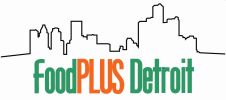Session 17: Using the Community Capitals Framework to Model Community Change
1:40 - 3:00 PM | Room 103
Mowed Grass, Less Fear, More Trust: Community Capitals and the Neighborhood Effects of Urban Greening (the Case of Flint, Michigan)
Stephen Gasteyer and Rachel Johansen
Michigan State University
This presentation addresses the question: What are the impacts of urban greening initiatives at the neighborhood level, and how do we know? To do this, we employ the community capitals framework (CCF), an analysis framework that engages the community in modeling changes in community assets resulting from development initiatives. Our findings indicate that at the community level, urban greening has positive benefits in terms of increased neighborhood feelings of safety and trust, but that it has done little in terms of improving financial assets in the community.
The Issues of Drought in Public Health Efforts: What can be Done in the Future?
Nicole Wall
University of Nebraska – Lincoln
This paper demonstrates the use of the Community Capitals Framework (CCF) in addressing the impact of drought on community health and resilience. The paper builds on several previous or ongoing initiatives by the National Drought Mitigation Center and various partners and colleagues, with an emphasis on recent work in health preparedness before, during, and after a drought and what is needed to help strengthen these efforts in the face of climate change induced drought.
Using Ripple Effects Mapping to Determine Community Capitals Outcomes
Mary Emery
South Dakota State University
A critical challenge in modeling rural community development outcomes is accounting for the intended and unintended results of a program, intervention or collaborative for individuals, groups, sectors or communities. This presentation will discuss how this challenge has been overcome through the use of the ripple effect mapping (REM), a promising method for conducting impact evaluation that engages program and community stakeholders to retrospectively and visually map the “performance story” resulting from a program or complex collaboration. The presentation will discuss the basic tenets of REM and discuss examples of how it has been employed with the community capitals framework.


